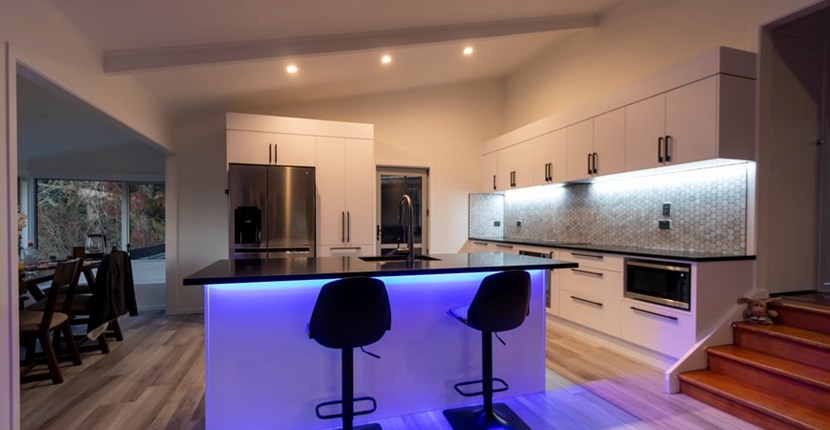Posted on 20 10 2021
Everything you need to know about LED lighting

If your power bill is eye-wateringly high even in summer, check your lightbulbs. If you’re still lighting your home with halogen or incandescent bulbs, they could account for up to 40 percent of your monthly power bill.
In new homes, 75 per cent of lights must be energy efficient and LED lighting is the standard. It’s cheaper to run, lasts longer and is better for the environment. LED bulbs cost a bit more to buy but they use much less electricity and will start saving you money immediately.
Because LEDs convert almost all their energy into light, they produce very little heat and can have insulation laid straight over top, meaning no gaps and a warmer house.
With a couple of exceptions, you can simply replace your old halogen or incandescent bulbs with LEDs, then savour the fact that you won’t have to change another bulb for five years or more. When they do reach the end of their lifespan, LEDs slowly dim over time instead of burning out abruptly.
The exceptions are:
Recessed downlights: It’s best to have an electrician replace the whole fitting.
Enclosed fixtures: LED bulbs need good ventilation and should not be fully enclosed in plastic or glass.
For other light fittings, you can simply put in LEDs and enjoy the benefits. The savings are great enough that it’s worth replacing your halogen and incandescent bulbs right now. If you have ‘energy saving’ compact fluorescent light (CFL) bulbs, you might want to wait until they burn out.
Make sure you choose the right fitting and an LED that will match the light output of the old bulb.
Fittings: For standard bulbs, check if you need a bayonet or screw fitting. To replace halogen spotlights, check if you need a low-voltage (12 V) MR16 (also called GU5.3) bulb with two sharp pins, or a mains-voltage (240 V) GU10 bulb with two studs.
Light output: The energy a bulb consumes is measured in watts and brightness is measured in lumens. A 13–15-watt LED will produce 800 lumens, the same amount of light as a 60-watt halogen or incandescent bulb.
Use this guide to get the right amount of light from your LEDs:
|
Incandescent/halogen |
LED equivalent |
|
100 watts |
23-30 watts (1600 lumens) |
|
75 watts |
18-25 watts (1100 lumens) |
|
60 watts |
13-15 watts (800 lumens) |
|
40 watts |
9-13 watts (450 lumens) |
You can buy dimmable LEDs, although in some cases you might need to change your dimmer switches.
LEDs are not perfect, as they produce a lot of blue light, which has been linked to eye troubles and sleep disturbances. Researchers are developing an LED that emits less blue light, but in the meantime, you do have a range of colour temperatures to choose from.
LED light colour temperature is measured in Kelvins. The lower the Kelvins, the warmer and more yellow the light is. Higher Kelvins give you cooler and bluer light.
2700K to 3000K will produce a warmer glow suitable for bedrooms and living rooms. For the kitchen you could choose anywhere between 3500 and 5000K, which will give you a whiter light, closer to natural daylight. At 4000K your LEDs will produce light that’s good for task lighting.
LED technology is changing all the time and with developments including voice activation, integrated speakers and cameras, and even the ability to kill bacteria, LED lighting may be just the beginning.
If you’re considering upgrading your lighting to LEDs, our friendly team of experts can help you with the best choice for your home, so get in touch with us today.